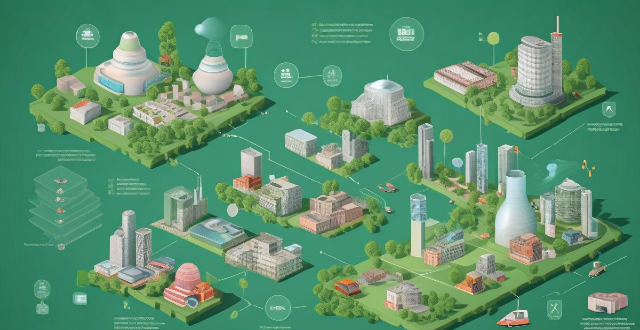Effective management of ecological protection areas involves clear objectives, scientific research, comprehensive management plans, strict law enforcement, promotion of sustainable use, community education and engagement, international cooperation, and financial sustainability. This multi-faceted approach ensures the preservation of biodiversity, conservation of natural habitats, and the overall health of our planet.

Effective Management of Ecological Protection Areas
Ecological protection areas are crucial for maintaining biodiversity, preserving natural habitats, and ensuring the long-term health of our planet. To manage these areas effectively, a comprehensive approach is required that involves various stakeholders, scientific research, and community engagement. Here are some measures that can be taken:
Establish Clear Objectives
- Define Goals: Clearly outline the primary objectives of the ecological protection area, such as conservation, research, education, or sustainable use.
- Set Priorities: Identify which species or ecosystems need the most attention and protection based on their vulnerability and importance to the region.
Conduct Scientific Research
- Baseline Data Collection: Gather comprehensive data on the flora, fauna, soil, water, and air quality within the protected area.
- Monitoring and Assessment: Regularly monitor key indicators to evaluate the health of the ecosystem and track changes over time.
Develop Management Plans
- Management Strategies: Create detailed management plans that outline how resources will be allocated, what activities are permitted, and how potential threats will be mitigated.
- Adaptive Management: Be prepared to adjust management strategies based on new information or changing circumstances.
Enforce Laws and Regulations
- Protection Legislation: Implement and enforce laws that prohibit harmful activities like poaching, deforestation, and pollution.
- Penalties and Sanctions: Establish a system of penalties for those who violate the rules to deter unauthorized activities.
Promote Sustainable Use
- Ecotourism: Encourage low-impact tourism that provides economic benefits while minimizing environmental damage.
- Local Involvement: Involve local communities in sustainable practices that benefit from the resources without compromising the integrity of the ecosystem.
Educate and Engage Communities
- Public Awareness Campaigns: Run campaigns to educate the public about the importance of ecological protection areas and how they can contribute to their preservation.
- Community Programs: Develop programs that involve local communities in conservation efforts, providing them with incentives for participating in protective measures.
Foster International Cooperation
- Transboundary Collaboration: Work with neighboring countries if the ecological protection area spans across borders to ensure consistent management practices.
- Global Networking: Join global networks of protected areas to share best practices and learn from other successful conservation initiatives around the world.
Maintain Financial Sustainability
- Diversify Funding Sources: Seek funding from government grants, international aid, private donations, and sustainable business ventures within the protection area.
- Cost-Effectiveness Analysis: Continuously assess the cost-effectiveness of management practices to ensure that limited funds are used efficiently.
By implementing these measures, ecological protection areas can be managed in a way that not only preserves vital ecosystems but also supports sustainable development and enhances the well-being of local communities. It's essential to recognize that these areas are not just isolated nature reserves but integral parts of our global environment that require ongoing commitment and collaboration from all sectors of society.